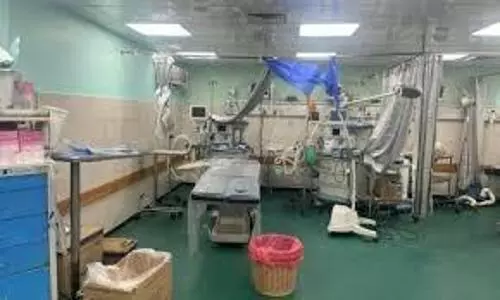
Novel method can 3D print objects 100 times faster
text_fieldsRepresentative Image
"Washington: Scientists have developed a 3D printing method that is up to 100 times faster than existing processes.
The approach lifts complex shapes from a vat of liquid rather than building up plastic filaments layer by layer.
3D printing could change the game for relatively small manufacturing jobs, producing fewer than 10,000 identical items, because it would mean that the objects could be made without the need for a mold costing upwards of USD 10,000.
However the most familiar form of 3D printing, which is sort of like building 3D objects with a series of 1D lines, hasn't been able to fill that gap on typical production timescales of a week or two.
"Using conventional approaches, that's not really attainable unless you have hundreds of machines," said Timothy Scott, an associate professor at University of Michigan in the US.
Their method solidifies the liquid resin using two lights to control where the resin hardens -- and where it stays fluid. This enables the team to solidify the resin in more sophisticated patterns.
They can make a 3D bas-relief in a single shot rather than in a series of 1D lines or 2D cross-sections. Their printing demonstrations include a lattice, a toy boat and a block M.
It was necessary to overcome the limitations of earlier vat-printing efforts. The resin tends to solidify on the window that the light shines through, stopping the print job just as it gets started.
By creating a relatively large region where no solidification occurs, thicker resins -- potentially with strengthening powder additives -- can be used to produce more durable objects.
The method also bests the structural integrity of filament 3D printing, as those objects have weak points at the interfaces between layers.
"You can get much tougher, much more wear-resistant materials," Scott said.
In conventional systems, there is only one reaction. A photoactivator hardens the resin wherever light shines. In the new system, there is also a photoinhibitor, which responds to a different wavelength of light.
Rather than merely controlling solidification in a 2D plane, as current vat-printing techniques do, the team can pattern the two kinds of light to harden the resin at essentially any 3D place near the illumination window.
The team has filed three patent applications to protect the multiple inventive aspects of the approach, and Scott is preparing to launch a startup company.























